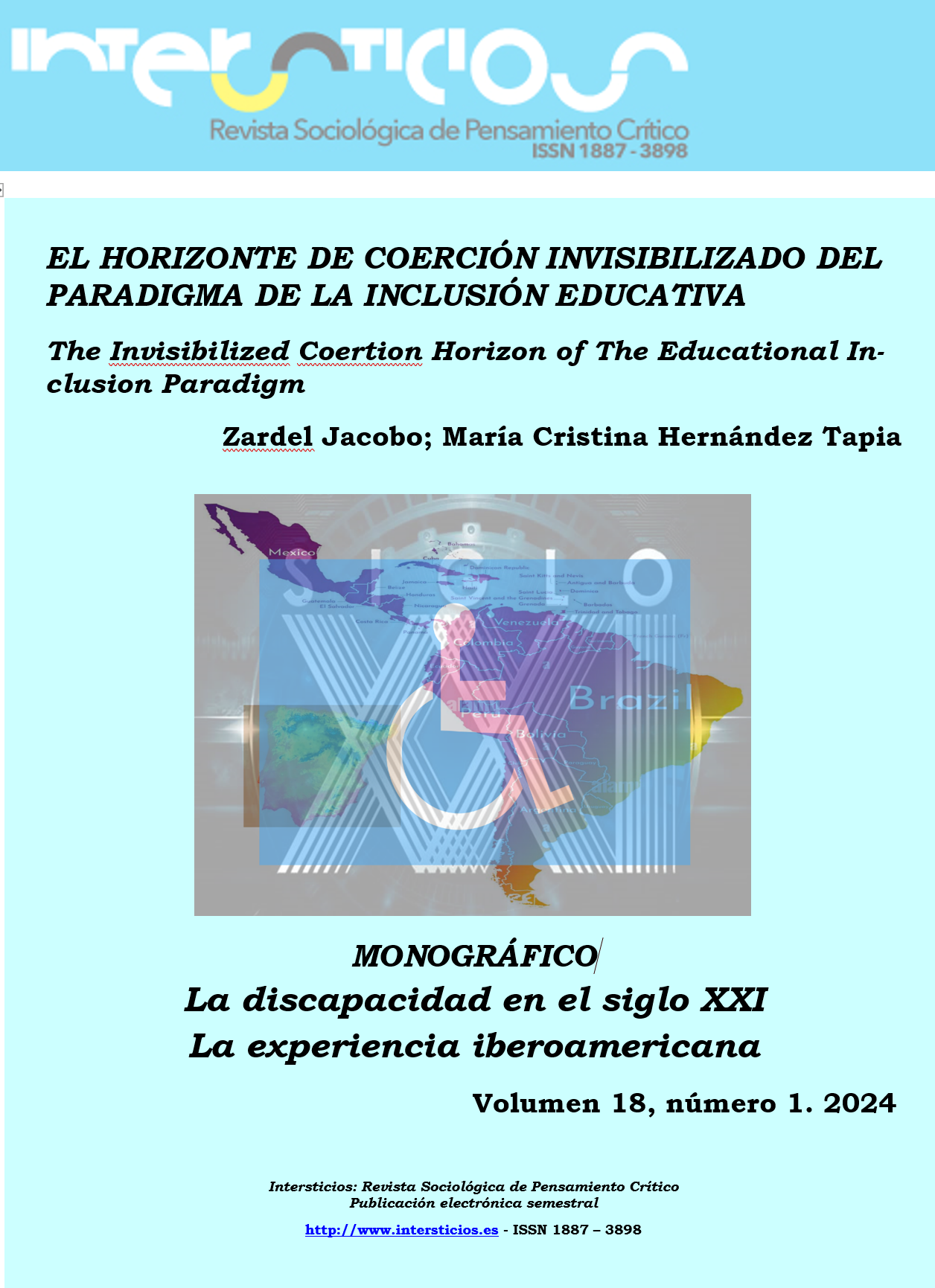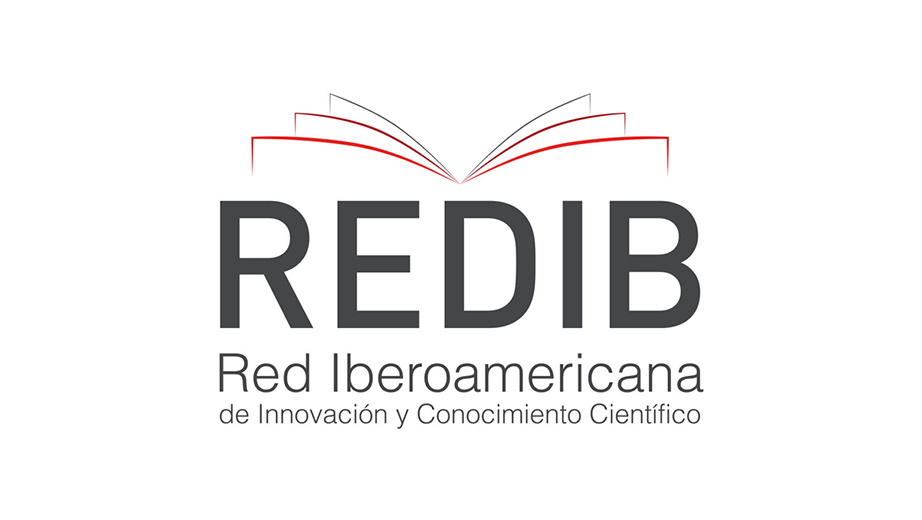The Invisibilized Coertion Horizon of The Educational Inclusion Paradigm
Keywords:
Deconstruction, Special education, educational integration, inclusion, disabilityAbstract
This paper is an approach to the vicissitudes implicit in the issue of Inclusive Education in the case of Mexico. In the literature, the Special Education model is usually positioned as the cause of segregation and separation of the population with disabilities, and the Integration Model and later the Inclusion Model are presented as the ones that will reverse it and make possible an educational transformation that restores dignity to people with disabilities. In this text we try, from a critical point of view, to deconstruct this assumption and unveil the complex political and historical processes that impact the organisational forms and logics of the educational field and show the horizon of coercion of the social and economic context that creates the vulnerability of people with disabilities and the hierarchical relationships that the system implicitly considers in a predominantly positive rather than negative relationship, when perhaps what dominates is an asymmetrical negative reciprocity and hence the unequal positioning of the subjects. Vulnerability is taken as an attribute of people, forgetting the context of coercion from the outside, which the Convention on Persons with Disabilities euphemistically calls barriers, as an impediment to be eliminated, when the context cannot be eliminated by decree alone. Thus, in this text we seek to make a brush of the history of Special Education to Educational Inclusion in its dimension of attention to people with disabilities and the vicissitudes carried out in a matrix of complexity, heterogeneity and contradictions inherent to the realities that have drawn the country approximately from 1970 to 2018.
References
Acuña, L. A. (6 de octubre 2018): “La educación especial en México: el futuro in-cierto”, Educación Futura. https://www.educacionfutura.org/
Adame, E., Z. Jacobo y J. Alvarado (2016): Sistema Educativo e Inclusión. Más allá de la Integración Educativa, México, Editorial Trillas.
Altamirano, M. y R. Campos, (coord.) (2020): Hacia un Estado de bienestar para México. México, El Colegio de México. https://bienestar.colmex.mx/
Archivo Histórico de la Universidad Nacional Autónoma de México [AHUNAM]. (2015): Secretaría de Instrucción Pública y Bellas Artes. http://www.ahunam.unam.mx/consultar_fcu?id=1.32#
Bärbel Inhelder. (2023, 26 de diciembre) En: Wikipedia, La enciclopedia libre. https://es.wikipedia.org/wiki/B%C3%A4rbel_Inhelder
Benjamín, W. (2005): Tesis sobre la Historia y otros Fragmentos, México, Editorial Contrahistorias.
Certeau, M. (2007): La invención de lo cotidiano. 1 artes de hacer, España, Univer-sidad Iberoamericana.
El Colegio de México. (s.f.): Hacia un Estado de Bienestar para México. https://bienestar.colmex.mx/
Derrida, J. y E. Roudinesco (2001): Y mañana qué…, México, Fondo de Cultura Económica.
Educación Futura. (12 mayo, 2016): México vive enloquecido por evaluación; es un sistema que fracasó: Ángel Diaz Barriga, https://www.educacionfutura.org/
Echeverría, B. (2001): Definición de la Cultura. México, Editorial ITACA, UNAM.
Jacobo, Z. (2010): La discapacidad como una figura de discriminación en la moder-nidad: de la historia a las prácticas vigentes, (Tesis de doctorado) UNAM, Méxi-co.
Jacobo Z. (2012): Las Paradojas de la Integración/Exclusión en las Prácticas Edu-cativas. Efectos de Discriminación o Lazo Social, Buenos Aires, Argentina, Edi-torial Noveduc.
Jullian, C. (2002): Génesis de la comunidad silente en México: la Escuela Nacional de Sordomudos (1867 a 1886), (Tesis de Licenciatura). Universidad Nacional Autónoma de México. http://132.248.9.195/ppt2002/0308466/Index.html
Jullian, C. (2018): “Haciendo “hablar” a una historia muda. Surgimiento y conso-lidación de la comunidad sorda de Morelia”, Relaciones. Estudios de historia y sociedad, 39(153), 261-291. https://www.scielo.org.mx/
Ley General de Educación Especial. (30 de septiembre de 2019). Diario Oficial de la Federación. México. https://www.diputados.gob.mx/
Lomnitz, C. (2005): “Sobre reciprocidad negativa”, Revista de Antropología Social, vol. 14, pp. 311-339. https://www.redalyc.org/pdf/838/83801412.pdf
Lomnitz, C. (2021): “México: el tejido roto”, Revista Nexos. https://www.nexos.com.mx/?p=54499
Olivera, M. (s/f): Evolución Histórica de la Educación Básica a través de los Proyec-tos Nacionales:1921-1999. http://biblioweb.tic.unam.mx/
Organisation for Economic Cooperation and Development, [OCDE]. (s.f.): Nuestra Proyección Mundial. https://www.oecd.org/acerca/miembros-y-socios/
Programa de Inclusión y Equidad Educativo [PIEE]. (2014). http://www.inclusionyequidad.sep.gob.mx/es/transparencia/diagnostico.html
Romero, S. y I. García. (2013): “Educación especial en México”, Educación especial en México. Desafíos de la educación inclusiva, 7(2), 77-91. https://dialnet
Unidad de Orientación al Público. (s.f.): ¿Qué es U.O.P? https://uopanahuac

Downloads
Published
Issue
Section
License
Copyright (c) 2024 Zardel Jacobo, María Cristina Hernández Tapia

This work is licensed under a Creative Commons Attribution 4.0 International License.
p class="TEXTO-izquierda">Authors maintain the @copyright, giving to the journal the right of first editio.







